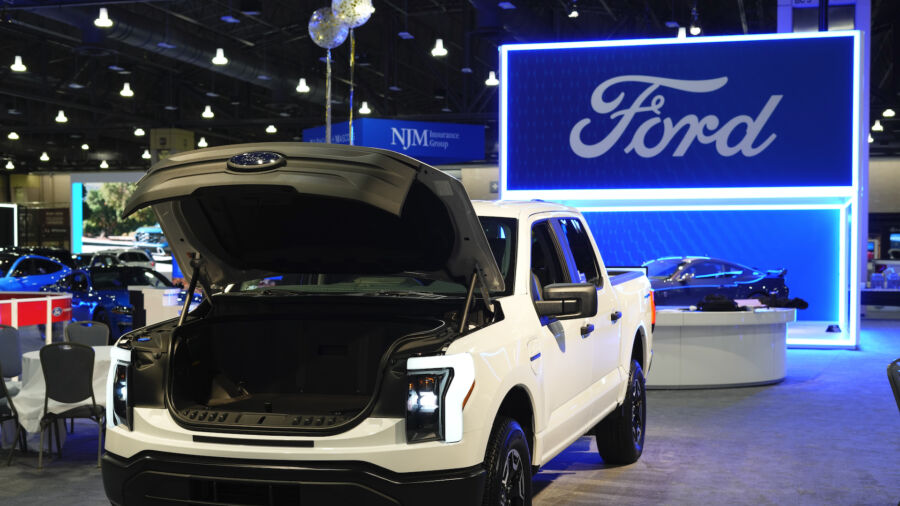The Ford Motor Company revealed that its electric vehicle (EV) business, the Model e, took a $2.1 billion loss over the course of 2022 and the company predicted that it will lose another $3 billion in 2023 as the company invests further in the project.
The loss of about $2.1 billion for Ford EVs in 2022 adds to an approximately $900 loss from 2021.
The automobile manufacturer offset its approximately $3 billion losses on EVs over the past two years with profits on its internal combustion and hybrid vehicle sales. Ford Blue, which sells internal combustion and gas-electric hybrid vehicles, made just over $10 billion before taxes during the last two years. Ford Pro, which serves as Ford’s commercial vehicle unit, made $5.9 billion during those years.
Ford said it expects Ford Blue to earn $7 billion and Ford Pro to earn $6 billion in pretax profits in 2023 before taxes, for nearly double last year’s pre-tax profits.
Reflecting on 2022, Ford president and CEO Jim Farley admitted some missed opportunities contributed to the company’s losses for the year.
“We should have done much better last year,” Farley said (pdf). “We left about $2 billion in profits on the table that were within our control, and we’re going to correct that with improved execution and performance.”
Ford’s Expanding EV Project
Ford chief financial officer John Lawler said the Ford Model e lineup should be viewed as a startup company within the larger business.
“As everyone knows, EV startups lose money while they invest in capability, develop knowledge, build (sales) volume and gain (market) share,” he said.
CNBC reported some Wall Street analysts recently urged Ford to treat its EV business as a spinoff. Farley and other company executives pushed back on the idea, arguing that keeping the Model e unit in-house will allow it to draw on Ford’s existing manufacturing base, giving it an advantage over startup companies that manufacture EVs exclusively that had to build up their manufacturing capabilities from nothing.
The Ford Model e lineup currently includes three vehicles types: the Mustang Mach E SUV, the F-150 Lightning pickup, and the E-Transit commercial van.
Ford said its electric vehicle unit will be profitable before taxes by late 2026, with an 8 percent profit margin before taxes, to be driven by “ambitious scaling of EV production run rates.” The company wouldn’t say exactly when it expects the Model e line to make money on aftertax income.
Ford has announced plans to build four new battery factories and a new vehicle assembly plant in the past two years. The company has also described plans to spend heavily to acquire raw materials to build electric vehicles.
In January, Ford cut the price of its various Mustang Mach-E SUV models, cutting costs by as much as $6,000. The move came shortly after the Tesla electric vehicle company took a similar step to cust prices on some of its Model 3 and Model Y versions.
The company said those price reductions will coincide with increased production, with hopes to drive popularity in the Mustang Mach-E, which was the third best-selling EV model in the United States in 2022.
“We are not going to cede ground to anyone. We are producing more EVs to reduce customer wait times, offering competitive pricing and working to create an ownership experience that is second to none,” Marin Gjaja, the chief customer office for the Model e line, said at the time. “Our customers are at the center of everything we do—as we continue to build thrilling and exciting electric vehicles, we will continue to push the boundaries to make EVs more accessible for everybody.”
Ford reported about two-thirds of Mustang Mach-E customers came from competitor brands.
“We want our customers to know they made the right decision by choosing a Mustang Mach-E, and we’ll continue to play a proactive role in doing the right thing for those joining the Ford family,” Gjaja added.
The Associated Press contributed to this article.

